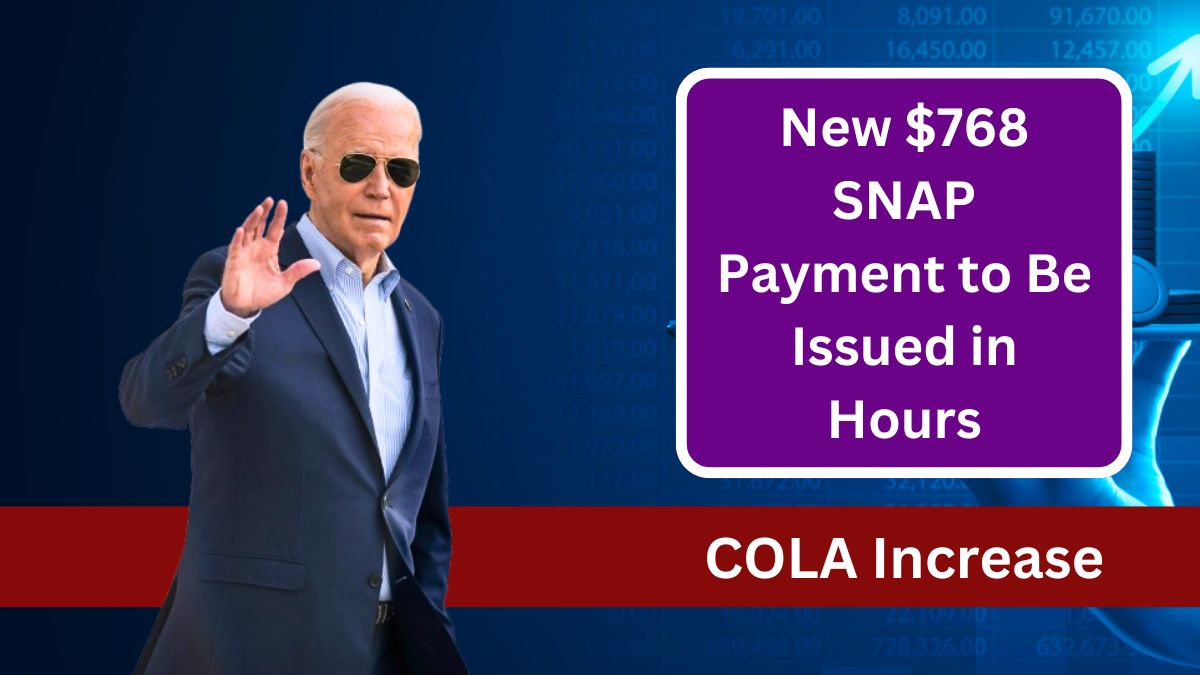With the holidays approaching, knowing when you’ll receive your Supplemental Nutrition Assistance Program (SNAP) benefits is critical for budgeting. Many states are still distributing October payments, while others are preparing for November. The 2025 Cost-of-Living Adjustment (COLA) increase is already factored in, allowing families and individuals to plan accordingly. This guide will help you understand when your Electronic Benefit Transfer (EBT) card will be loaded with SNAP benefits, along with documentation needed to qualify for assistance.
Let’s take a closer look at the October and November SNAP payment schedules and how to ensure you receive the full benefits you are eligible for.
October Payments
Some states are still distributing payments in October. The maximum benefit amounts are as follows: up to $292 for individuals, $768 for a family of three, $975 for a family of four, and $1,756 for a family of eight. Here is a breakdown of the remaining payment dates for October:
| State | Payment Dates |
|---|---|
| Alabama | October 4-23 |
| Delaware | October 2-23 |
| Florida | October 1-28 |
| Georgia | October 5-23 |
| Indiana | October 5-23 |
| Kentucky | October 1-19 |
| Louisiana | October 1-23 |
| Maryland | October 4-23 |
| Michigan | October 3-21 |
| Mississippi | October 4-21 |
| Missouri | October 1-22 |
| New Mexico | October 1-20 |
| North Carolina | October 3-21 |
| Ohio | October 2-20 |
| Tennessee | October 1-20 |
| Texas | October 1-28 |
| Washington | October 1-20 |
| Puerto Rico | October 4-22 |
If you haven’t received your October benefits yet, check this table to see when your state will be sending out payments.
November Payments
If you didn’t receive all your October SNAP benefits, or if you’re receiving assistance for the first time in November, use this table to find out when you’ll receive your payment.
| State | Payment Dates |
|---|---|
| Alabama | November 4-23 |
| Alaska | November 1 |
| Arizona | November 1-13 |
| Arkansas | November 4-13 |
| California | November 1-10 |
| Colorado | November 1-10 |
| Connecticut | November 1-3 |
| Delaware | November 2-23 |
| Florida | November 1-28 |
| Georgia | November 5-23 |
| Hawaii | November 3-5 |
| Idaho | November 1-10 |
| Illinois | November 1-10 |
| Indiana | November 5-23 |
| Iowa | November 1-10 |
| Kansas | November 1-10 |
| Kentucky | November 1-19 |
| Louisiana | November 1-23 |
| Maine | November 10-14 |
| Maryland | November 4-23 |
| Massachusetts | November 1-14 |
| Michigan | November 3-21 |
| Minnesota | November 4-13 |
| Mississippi | November 4-21 |
| Missouri | November 1-22 |
| Montana | November 2-6 |
| Nebraska | November 1-5 |
| Nevada | November 1-10 |
| New Hampshire | November 5 |
| New Jersey | November 1-5 |
| New Mexico | November 1-20 |
| New York | November 1-9 |
| North Carolina | November 3-21 |
| North Dakota | November 1 |
| Ohio | November 2-20 |
| Oklahoma | November 1-10 |
| Oregon | November 1-9 |
| Pennsylvania | First 10 business days |
| Rhode Island | November 1 |
| South Carolina | November 1-10 |
| South Dakota | November 10 |
| Tennessee | November 1-20 |
| Texas | November 1-28 |
| Utah | November 5, 11, 15 |
| Vermont | November 1 |
| Virginia | November 1-7 |
| Washington | November 1-20 |
| West Virginia | November 1-9 |
| Wisconsin | November 1-15 |
| Wyoming | November 1-4 |
| Guam | November 1-10 |
| Puerto Rico | November 4-22 |
| District of Columbia | November 1-10 |
| U.S. Virgin Islands | November 1 |
SNAP Benefit Amounts
Your SNAP benefit amount depends on your household size, income, and eligibility. The 2025 COLA increase has been applied to these payments, and here are the maximum amounts you can receive:
| Household Size | Maximum SNAP Benefits |
|---|---|
| 1 | $292 |
| 3 | $768 |
| 4 | $975 |
| 8 | $1,756 |
Many families will receive these increased benefits based on eligibility, but some may qualify for smaller payments closer to the average. For instance, the average benefit for a family of three is about $594.
SNAP Eligibility
To qualify for SNAP benefits, you need to meet your state’s eligibility requirements and provide documentation to support your application. While states may vary slightly in their specific requirements, here’s a general list of documents you may need to apply:
- Proof of identity and age: A driver’s license, passport, or birth certificate.
- Proof of citizenship or immigration status: You’ll need to provide documents such as a birth certificate, Naturalization Certificate, or a permanent resident card to verify your legal residency.
- Social Security Number: You must provide your Social Security card or proof of application.
- Proof of residency: Documents like a lease agreement, rent receipt, or mortgage statement verify your current address.
- Income verification: Recent pay stubs, benefit letters, or tax returns are used to assess your household’s income. If self-employed, you’ll need to submit business income documents.
- Financial resources: Submit bank statements showing your assets. Certain resources, like your home, are typically excluded.
- Utility, childcare, and medical expenses: If applicable, you may also need to show bills for utilities, child care, and medical costs above $35 for elderly or disabled members.
- Work requirements: Able-bodied adults without dependents must meet work requirements, though some individuals (e.g., seniors, pregnant women, and children) are exempt.
Having these documents ready can help ensure a smooth application process for receiving your SNAP benefits.
FAQs
How much can I receive in SNAP benefits?
The maximum amount for a family of three is $768, and for a family of four, it’s $975.
When will I receive my November SNAP benefits?
Payments vary by state, ranging from November 1 to 28.
What documents do I need to apply for SNAP?
Proof of identity, residency, income, and Social Security Number are required.
Can I receive SNAP benefits in both October and November?
Yes, depending on your eligibility and your state’s schedule.
Will COLA increases affect my SNAP payments?
Yes, the 2025 COLA increase is already applied to the benefit amounts.











